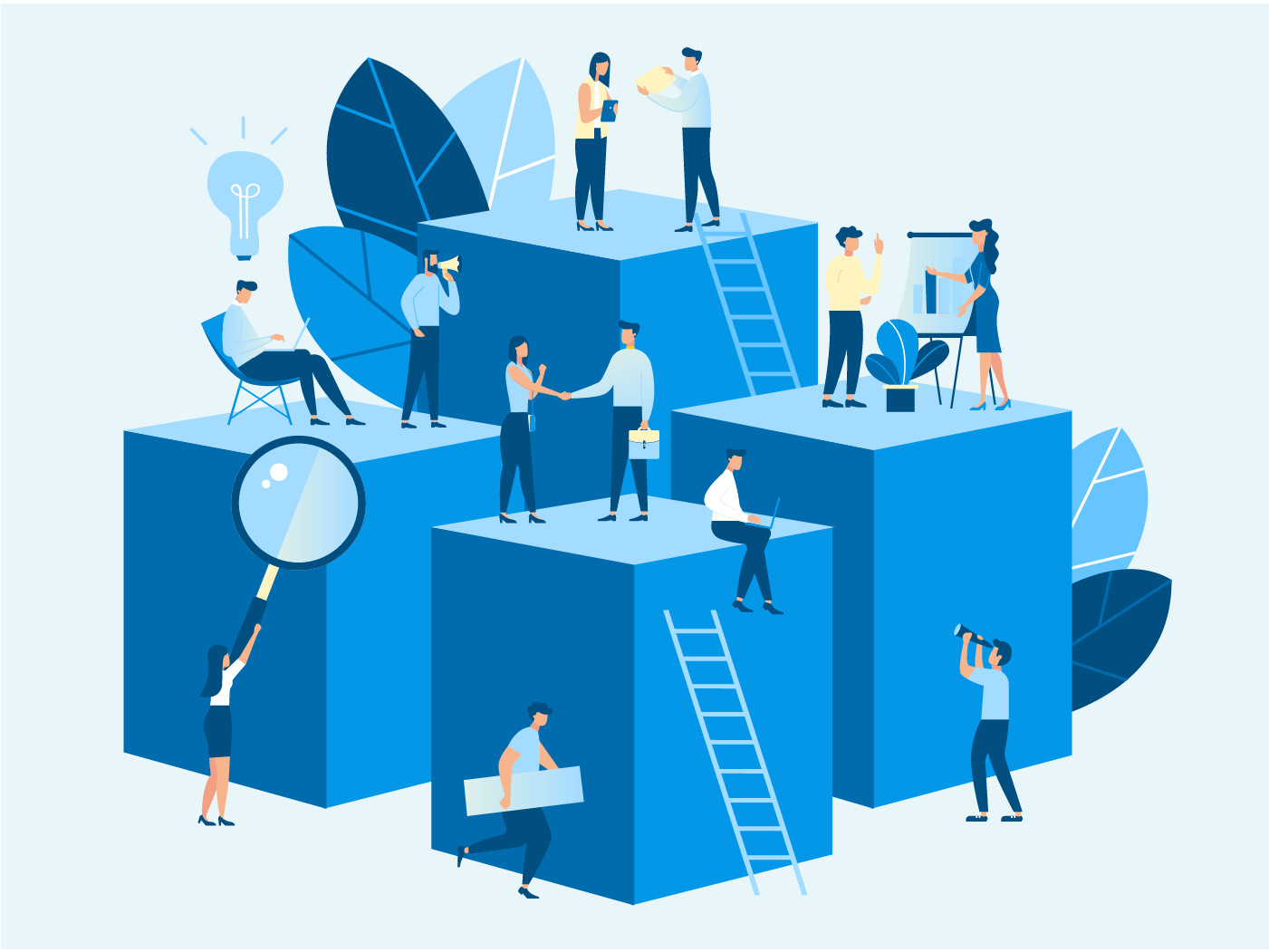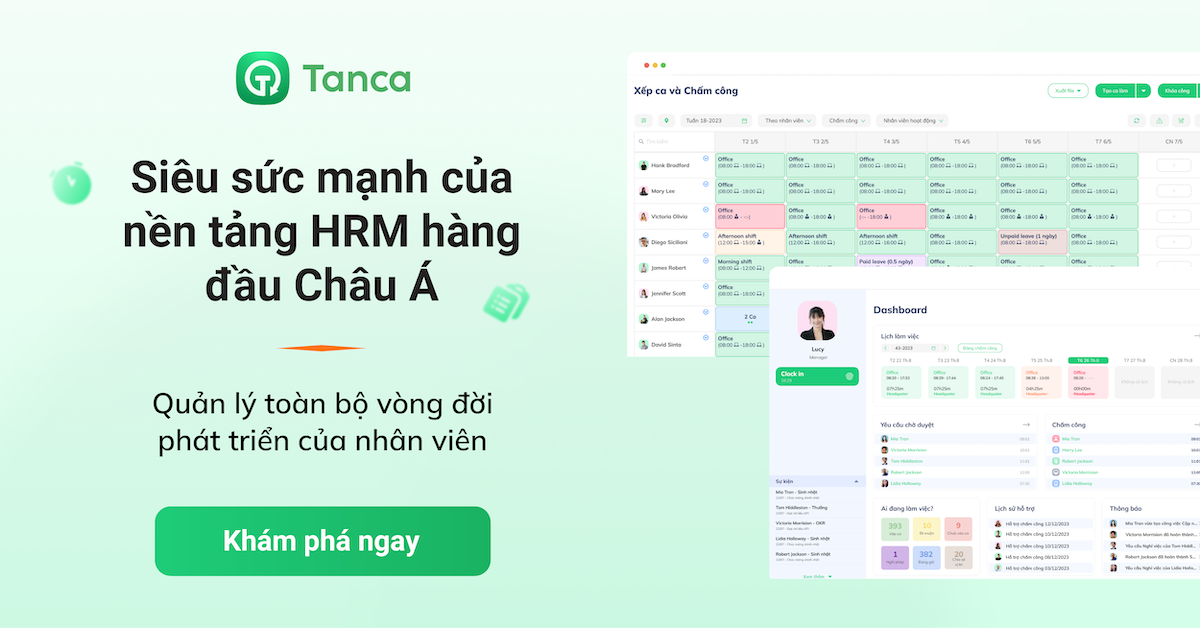Employee Development Plans is a 5-step strategy that you can follow. This method not only improves employee skills but also provides several benefits to businesses. In the next post, you will learn about the major components of staff development programs.
What is an employee development plan?

An employee development plan is a strategy for developing skills and knowledge for employees in their current role or for a future position. This is also one of HR's tasks to help increase employee professionalism.
This strategy will be unique to each organization. This plan is also influenced by the personnel's wishes and preferences. We cannot prescribe a standard formula for this.
So, what can you expect from this article? We will present essential principles that you can readily apply to all of your organizational and human resource situations. Here are some of the benefits of using these techniques.
Read more: HR For Tech Companies
Benefits of making staff growth strategy

A solid example of a win-win scenario is spending money on an employee development plan. Several ways in which your strategy can benefit both your business and your staff include:
- Better manage unforeseen circumstances.
- Attract qualified candidates.
- Improve employee engagement.
- Enhance employee performance.
- improved adherence to the team's and the organization's goals.
- Improve your company's efficiency and profitability.
- Develop promotional candidates.
- Increase employee happiness and retention.
- Assist your company in making long-term plans.
As you construct your strategy and enlist the assistance of managers and decision-makers, remember and emphasize these crucial advantages.
Read more: HR in Construction Company
What are types of employee professional development?

Continuing Education
For those looking to earn a higher degree or certification to improve their chances of getting a promotion, this kind of development plan might be a suitable fit. Tuition assistance could be a part of a similar professional development strategy.
Skill Based Training
Skills development may involve taking an online training course, using role-playing exercises to practice using a skill, or even obtaining continuing coaching.
Participation in professional organizations.
Participation in professional organizations
This kind of strategy could comprise participating in conferences and seminars organized by joint ventures, joining the board, or organizing activities supported by the organization.
These gatherings need to give workers the chance to network and become more involved in their companies and industries.
Read more: Recruitment Process
Employee development plan goals examples

Increase education
Employees decide to further their education in order to better their profession and salary. This will allow them to contribute even more in the future. The organization reimburses the costs of the payroll certification training and exam.
Leadership Development
After a number of years working for the organization, an individual feels ready to advance their leadership abilities.
At this time, that employee should be given the opportunity to practice management ability with greater responsibility. During this time, the direct manager of the employee offers direction and mentoring advice.
Being given a critical mission
A staff member who is excellent at communicating verbally and in writing takes on a project to aid in tearing down the barriers between siloed departments. They are tasked with identifying the teams' pain points and testing various solutions to assist team members work more effectively.
Growth of networks
Attending regional conferences and workshops is a worker from your company's relatively new department.
The person gains knowledge from the activities that they can use to advance the new department and adopt new tactics in their job.
Additionally, they have access to other experts in their industry who may share advice on how to form productive teams and produce significant outcomes.
What Makes Up a Development Plan's Important Elements?
Before we get started, let's go through the three main parts that any individual growth plan should have. These elements are meant to provide each plan with the proper basis and balance to meet everyone's demands.
Organizational requirements
What are the organization's requirements? What are its advantages and disadvantages? What skill sets and technologies does it require to remain competitive in the industry?
Employee expertise
What are the employee's strong points? How can they use their talents to benefit the team and the organization? How can these outcomes help them advance in their careers?
Employee enthusiasm
What are the employee's interests? What do they actually appreciate and find fulfilling? How might these interests be more closely aligned with their skills and the goals of the organization?
Employee development process

Step 1. Determine business needs
Try to match the needs of your company's business with the development needs of your employees before you set goals for their professional growth.
Examine your organization's current state, its desired future state, the aims, opportunities, and problems it faces, as well as the ways in which you must develop and improve its workforce to meet your goals.
Take into account both your long-term and immediate business goals. You can identify which employees require training first and which abilities are lacking or underdeveloped by doing a training needs analysis.
Step 2. Determine an employee's career path
Identify personnel who are motivated to learn and seeking opportunities for advancement. Concentrate your early efforts on those individuals, developing not only their present talents but also, where appropriate, providing leadership and management training.
When employees see that you are devoted to assisting them in achieving their individual professional objectives, they may be more encouraged to stay with your organization. This allows you to keep your most skilled personnel!
Step 3. Provide the Right Opportunities
Talk to your employee.
Once you understand what your employees require and desire, there are numerous ways you may assist them in achieving their objectives.
It's ideal if the manager is prepared to provide resources during the meeting with a list of them.
Rather than having to schedule another meeting, the employee and the manager can cooperate on the plan right now.
There are plenty of different options available, ranging from fashionable to traditional. It probably won't take long once you keep searching to develop a list of materials that are a better match for the requirements of your staff.
As an illustration, the following methods might be the subject of leadership training:
- Coaching.
- Mentorships.
- Cross-training is important.
- Job shadowing.
- Job switching.
- Assignments that need stretching.
- Job expansion and enrichment.
- A business university.
- Planning for succession.
- When numerous persons have a common requirement, group training classes are used.
Methods:
- Online
- Videos
- Slideshows
- Articles
- Quizzes
- White papers
- Podcasts
- Webinars
- Classes
- Ebooks
Step 4. Make a detailed action plan
Create a plan of action to assist staff in achieving their learning objectives after establishing clear objectives and a learning environment.
Managers and staff members can work together to determine specific projects and activities that will allow them to put their skills to use.
Exercising newly acquired skills and talents increases outcomes. Managers have a crucial role in stressing the link between employees' learning objectives and business strategy.
Step 5. Monitor Your Results and Adjust Your Approach
Once your company's employee development plan is in place, stick to the continuous measures that will ensure you and your employees continue to benefit from it.
Employees on their own
Each employee should have regular meetings with their supervisors to go over their progress, recognize their successes, and plan the next steps.
The frequency of formal meetings between an employee and a manager is less crucial than maintaining open lines of communication so that changes can be made as quickly as they are required.
To avoid hearing the justification, it's a good idea to mandate a certain number of meetings annually.
For your business
Comparable to upgrading a person's career development plan, enhancing your company's employee development plan involves measuring outcomes, evaluating progress, taking into account brand-new possibilities and challenges, adjusting goals and methods, and repeating the process often.
How do you put these steps into action? What is appropriate for one business may not be for another? Take into account what is sensible given the size, makeup, and circumstances of your organization.
Measure outcomes, evaluate development, take into account fresh chances and potential roadblocks, revise objectives, and repeat as necessary.Choose a manager to oversee the staff development strategy.
Small businesses might be forced to rely on a single individual who is already overburdened with duties. Larger firms may hire a full-time employee development professional or determine that a team is ideal. Any of these methods can be successful.
Giving the decision-maker the necessary authority to take action, making them accountable for the outcomes, and giving them a powerful voice to advance the organization's and its employees' interests are the main objectives.
Who is in charge of employee development?
A program's ability to develop employees depends on a number of variables. A few environmental components of a successful development plan are listed below, along with who is responsible for implementing them.
One of the strongest resources for directing staff training and development is culture. Organizations cannot grow by the efforts of a few people. Employees and managers alike must work to develop their own capabilities. In which HR serves as the planning department, with the assistance of management and employees.
FAQs
What is a good development plan for an employee?
A successful development strategy includes the following elements: Employees are challenged by a good plan to enhance their abilities, improve their knowledge, and acquire confidence in their responsibilities.
What should be included in a development plan?
A staff member's goals, necessary skill and skill building, and objectives must all be outlined in a plan for professional growth in order to enable career development and continual improvement.
What are the most effective employee development methods?
- Be Results Driven.
- Maintain a customer-centric mindset.
- Create a Vision.
- Be strategic in your approach.
- Be Skilled in Conflict Resolution.
- Pose Excellent Questions.
- Make high-quality choices.
- Be a Reliable Leader.
- Be an Outstanding Communicator.
- Getting Work Done Effectively Through Others
Conclusion
Of course, everyone wants to grow and be more successful in their career.
So at a certain stage, employees will crave to learn and practice knowledge that can help them upgrade themselves and increase their income.
They may connect with the individuals, chances, and resources they require to advance by developing an employee development plan.
Developing staff development plans can help you not only make your team more productive and informed, but it can also increase employee satisfaction.
Additionally, content employees are less inclined to hunt for employment elsewhere.
Hope you will make good use of this information in your situation.
Take a look at the best books on managing people in 2022 to improve your management thinking.











